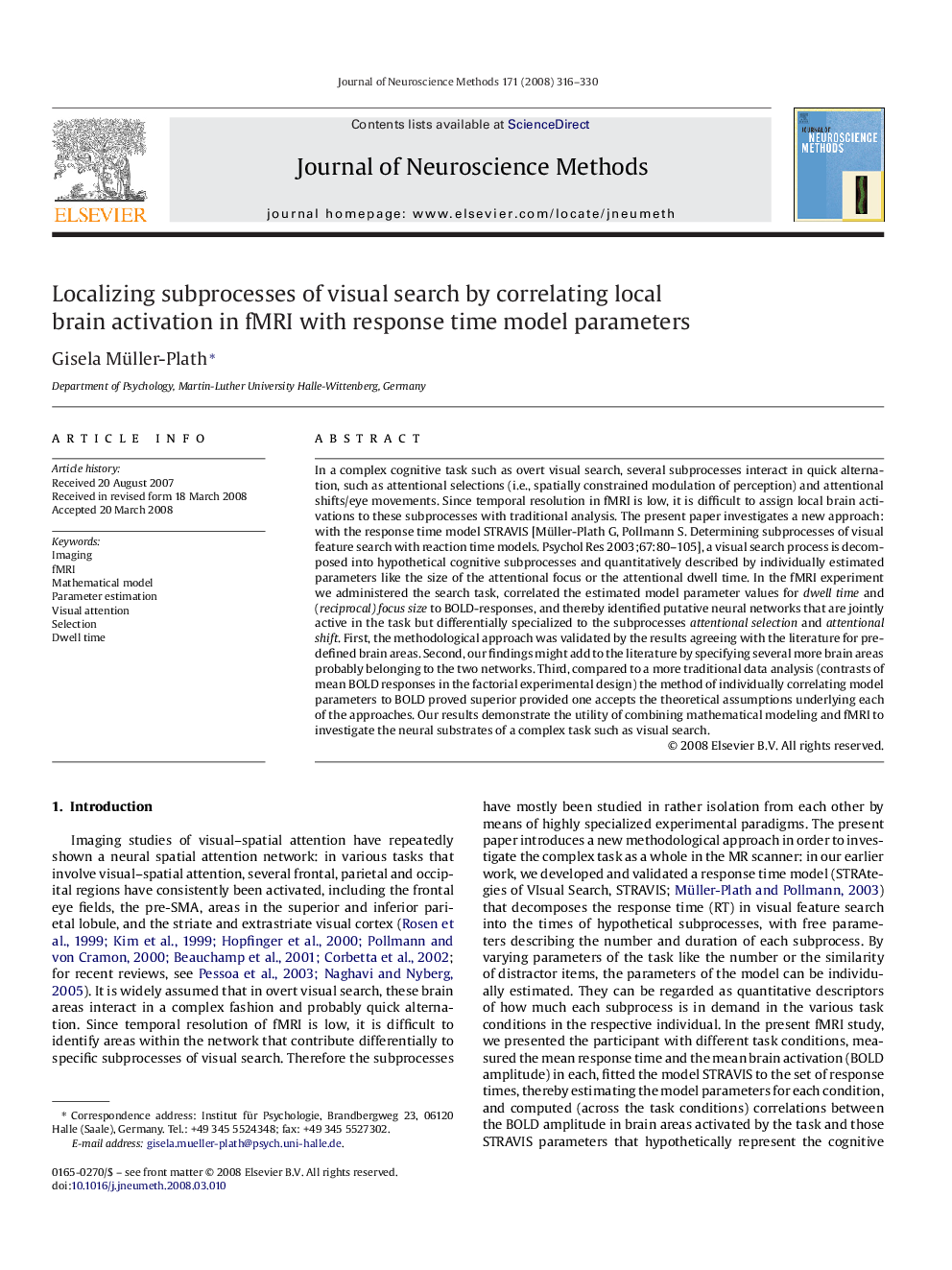| Article ID | Journal | Published Year | Pages | File Type |
|---|---|---|---|---|
| 4336304 | Journal of Neuroscience Methods | 2008 | 15 Pages |
Abstract
In a complex cognitive task such as overt visual search, several subprocesses interact in quick alternation, such as attentional selections (i.e., spatially constrained modulation of perception) and attentional shifts/eye movements. Since temporal resolution in fMRI is low, it is difficult to assign local brain activations to these subprocesses with traditional analysis. The present paper investigates a new approach: with the response time model STRAVIS [Müller-Plath G, Pollmann S. Determining subprocesses of visual feature search with reaction time models. Psychol Res 2003;67:80-105], a visual search process is decomposed into hypothetical cognitive subprocesses and quantitatively described by individually estimated parameters like the size of the attentional focus or the attentional dwell time. In the fMRI experiment we administered the search task, correlated the estimated model parameter values for dwell time and (reciprocal) focus size to BOLD-responses, and thereby identified putative neural networks that are jointly active in the task but differentially specialized to the subprocesses attentional selection and attentional shift. First, the methodological approach was validated by the results agreeing with the literature for predefined brain areas. Second, our findings might add to the literature by specifying several more brain areas probably belonging to the two networks. Third, compared to a more traditional data analysis (contrasts of mean BOLD responses in the factorial experimental design) the method of individually correlating model parameters to BOLD proved superior provided one accepts the theoretical assumptions underlying each of the approaches. Our results demonstrate the utility of combining mathematical modeling and fMRI to investigate the neural substrates of a complex task such as visual search.
Related Topics
Life Sciences
Neuroscience
Neuroscience (General)
Authors
Gisela Müller-Plath,
